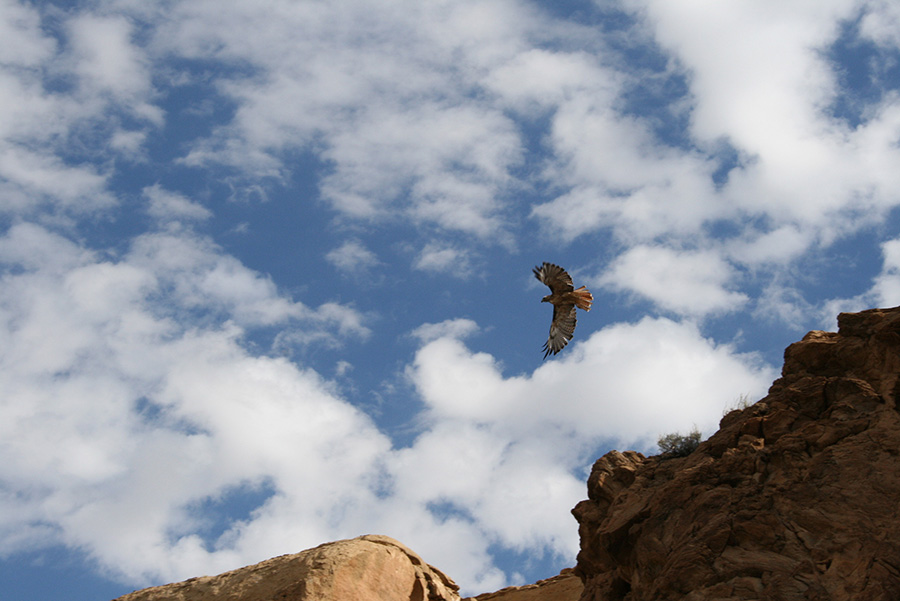Our modern world identifies so much with the rational mind that we tend to ignore the role that instinct plays in our lives. But we know that instinct orchestrates bodily responses, propelling behavior and consciousness. Mind/body healing was in its infancy just forty years ago, but decades of research have brought us to a greater understanding of the mind/body dynamic. Indeed, research into how the body responds to danger is helping to rewrite the definition and treatment of anxiety disorders, panic attacks and post-traumatic stress syndrome. Trauma is not so much a pathology as it is a physiological reaction. We’re animals, like it or not, and our responses to fear are hardwired into our bodies, drawing on our ancestral and personal memory banks.
For example, a hiker is walking through the woods and suddenly finds himself in visual range of a bear. He is really not thinking “bear” and “danger” as much as muscles, viscera and nervous system are preparing him for escape. Probabilities are non-consciously computed, based on such encounters over millions of years of historical evolution and possibly on his own personal experiences. So without thinking he heads toward a large tree with low branches. This urge to run is experienced as the feeling of danger, but is this anxiety? No. When the hiker directs himself toward the tree, it is experienced as escape—not anxiety.
Nothing to Fear But Fear Itself
Ethology (the study of animals in their natural environment) points to the “thwarting” of escape as the root of distress-anxiety. Anxiety actually occurs when our flight from danger is somehow thwarted or aborted, so we don’t get to complete our response to it. When animals (and that includes the human animal), carry out orienting and defensive behaviors smoothly and effectively, anxiety is not generated.
Our hiker will not experience trauma because he was able to respond successfully. Had there been no means of escape whatsoever, he would have felt trapped. Then his defensive preparedness for flight combined with the feeling of danger would have been thwarted, changing abruptly into the fixated emotional state of anxiety.
In a way, you could say that we really have only one fear: the fear of not being able to cope. Without active, available defense responses, we are unable to deal effectively with danger, and so we become anxious. Because the normal orientation and defensive escape resources have failed to resolve the situation, we realize life hangs in the balance. The body then responds with frenzied flight, freezing on the spot, or collapse. In the wild, tonic immobility, or freezing, is a potent adaptive strategy for animals where active escape is prevented because it can “buy time” for an animal to escape. In humans, it can become the crippling, fixating experience of trauma and panic anxiety.
Allowing the Body to Let Go of Anxiety
A somatic approach based in body awareness techniques is highly successful in treating trauma. Diffusing anxiety is accomplished by precisely and sequentially restoring the underlying flight-or-fight and other defensive responses that kick in at the moment before escape is thwarted.
Consider the case of one particular patient who had been suffering from panic attacks for some time. Nancy had not responded to psychotherapy, while tranquilizers and antidepressant drugs gave her only minimal relief. Relaxation training was equally unsuccessful.
When pressed for details about the “how and when” of her attacks, she revealed that the onset of her first attack occurred while she was taking a graduate school examination. She remembers breaking out in a cold sweat and shaking. Although she forced herself to write the test, her symptoms gradually worsened over time, to the point that she was no longer able to leave her home.
When Nancy was asked to recollect the sequence of events, something remarkable began to happen. She recalled the café, overhearing other students talking about how difficult the test was, her increasing agitation upon hearing this, then nervously entering the room, the exams and marking pencils being passed out, and that she was writing vigorously.
At that point in the retelling, she went into what is now known as relaxation-induced panic syndrome. With her pulse dropping, she became still and pale. Voicing her panic that she could not move, her throat became so tight that she could barely speak. “Why can’t I understand this? I feel so inferior, like I’m being punished…there’s something wrong with me…I feel like I’m going to be killed….”
When Dr. Levine asked her next to “feel” the pencil in her hands, Nancy suddenly remembered what she was thinking at the time: “My life depends on this exam!” Her heart rate started to increase at last. She was then asked to visualize a crouching tiger attacking her. Then she was told to “run toward the rocks, climb them and escape!” Nancy let out a blood-curdling yell, followed by full body convulsions.
The shaking lasted almost an hour, at which point she recalled long-forgotten, terrifying feelings from an earlier time. At four years of age she had experienced hospital trauma, when she was held down by doctors and nurses during a tonsillectomy with ether anesthesia! With her body’s release of its frozen defensive processes, buried memories were also released.
Remarkably, she left the session feeling like herself again. Eventually and after a few more sessions, Nancy was taken off medication and was able to carry on a normal life without relapse.
This was Dr. Levine’s first—and impromptu—application of the somatic experiencing technique. It demonstrates how repairing the psyche can be accomplished by progressively re-establishing the pre-traumatic defensive and orienting responses.
Now, our ever-expanding research on trauma is opening the door to the realization that unresolved trauma may indeed be the underlying cause of many other persistent and misunderstood medical problems, such as chronic fatigue syndrome and maladies of the immune system.
Peter Levine, PhD

